Everyday when I take train home or to work, I will marvel at the pink carpets of pigface as the train passes by the Altona Coastal Park. Now is the best time to have a close look as the pigface is in full bloom. However, it has been raining. When the sky cleared last Saturday, we immediately paid a visit to the Altona Coastal Park.
Carpobrotus is a genus of ground-creeping plants, with large daisy-like flowers, succulent leaves and long stems. The name refers to its edible fruits, “karpos” meaning fruit and “brota” meaning edible in Greek. Common names include ice plant and pigface, so called because the flower resembles a pig’s face – an association that will require a high level of imagination!
There are about 25 species within the genus, with a worldwide distribution. Most species are found in South Africa, one in South America, one in California and Oregon, and four in southern Australia. One species, Carpobrotus glaucescens, is noted for bearing salty fruits – a rare property in fruits. In Victoria, this species grows only in coastal far-east Gippsland.
The species found in Altona Coastal Park is Carpobrotus rossii. This is a native groundcover, common on sand dunes and rocky cliffs along the Victorian, Tasmanian, South Australian and Western Australian coastlines. Its common name is Native Pigface while its aboriginal name is Karkalla. It is named after William Ross, a botanical collector.
Karkalla is drought and somewhat frost resistant. It will withstand strong winds, salt spray and sand blasting. This tough plant will grow through sand drifts, even if completely covered. They can be useful to hold drifting sand and to colonize rapidly disturbed areas where water is of limited availability. Hence, it is useful in preventing dune erosion. Carpobrotus acinaciformis, an American species, is also fire-resistant and used as a ground cover.
Karkalla is a perennial plant with prostrate stems of 2 metres long or more, which often root at the nodes. Its leaves are succulent, 3.5–10 cm long and 6-11 mm thick, often incurved, green to bluish-green, smooth, triangular in cross-sections with slightly concave faces and pointed tips. The leaves act as water storage organs enabling the plant to survive hot, dry summers on coastal cliffs and sand.
The flowers are daisy-like, 4-6 cm in diameter, with numerous linear petals (actually sterile stamens) which are light purple, merging to white at their bases. Karkalla flowers in spring and summer. The fruit is fig-like, fleshy and indehiscent, slightly flattened and globular to ellipsoid in shape, 1.5-2.5 cm long, 1.5 cm wide and dull red in colour. It has small seeds.
Both the fruit and leaves were used as a food source by the aboriginal people. The fruits were eaten fresh or dried while the salty leaves were eaten with meat.
Like Aloe Vera, the leaf juice can be used externally for mosquito bites, burns, abrasions, open cuts, grazes and sunburn. It can be used to treat skin conditions and allergies such as ringworm, eczema, dermatitis, herpes, thrush, cold sores, cracked lips and chafing. The leaf juice can be used as a mild astringent. When mixed with water, the juice can be used to treat diarrhoea, dysentery and stomach cramps. It can also be used as a gargle for sore throat and laryngitis, and mild bacterial infections of the mouth.
An ancient remedy for constipation is to eat the fruit with brackish water. Syrup made from the fruit is said to have laxative properties. A mixture of leaf juice, honey and olive oil in water is an old remedy for tuberculosis.
References:


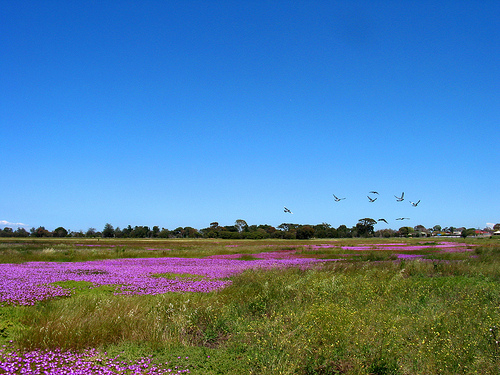
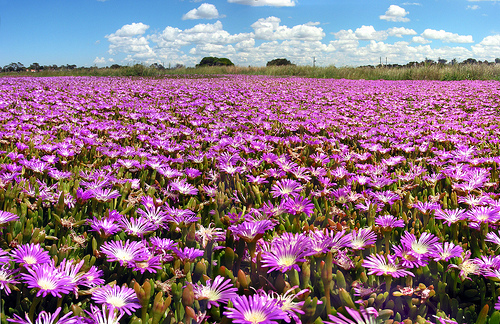
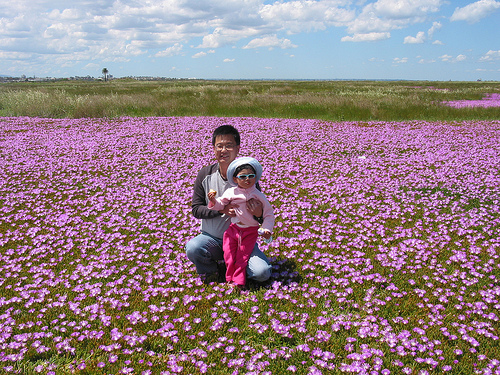
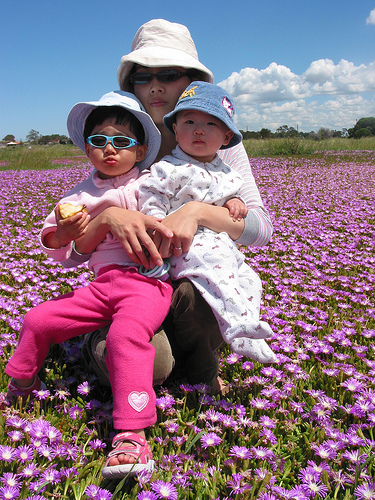
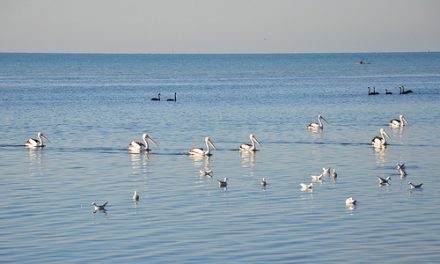
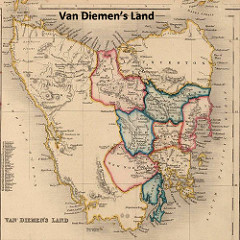
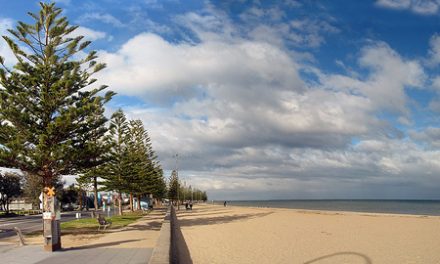

looks beautiful rosie
this is a very interesting account of pigface. The photographs are amazing. I don't think I have ever seen pigface covering such a huge area